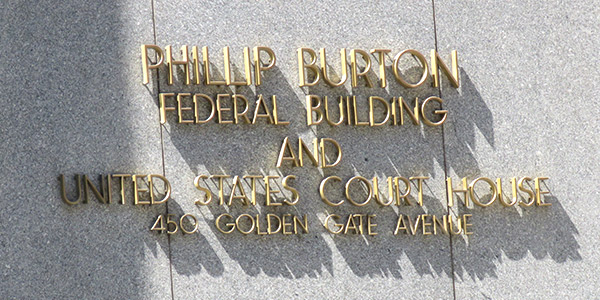By Hudson Sangree
Pacific Gas and Electric won approval Monday for its plan to issue $12 billion in new stock and to take on $11 billion in new debt to get out of bankruptcy, after California Gov. Gavin Newsom dropped his objection to the exit financing strategy in the face of the COVID-19 coronavirus pandemic-caused stock market meltdown.
The approval by U.S. Bankruptcy Judge Dennis Montali was another major hurdle PG&E had to clear in its effort to leave bankruptcy. It came during an unusual hearing held by telephone because Montali’s court in San Francisco, like many other institutions and businesses, was closed to slow the spread of COVID-19.
After hearing briefly from lawyers for PG&E, Newsom’s office and others, Montali said he was ready to declare PG&E’s financial plan sound enough.
“The exigencies of the circumstances today do not lend themselves to try to be more detailed. The record speaks for itself,” Montali said. “And therefore I’m going to compliment the moving parties and also the governor’s office and his advisers for working with the debtor to come to the point we are. There are numerous things that have to continue to get resolved, but this is one of the many milestones that I think is important.”
Wildfire victims and other parties to the bankruptcy must vote to approve PG&E’s Chapter 11 reorganization plan, and the California Public Utilities Commission still must approve the proposal. (See CPUC President Wants More Control over PG&E.)
PG&E filed for bankruptcy in January 2019 after a series of devastating wildfires sparked by its equipment in 2015, 2017 and 2018 put it in the position of having to pay more than $30 billion to thousands of residents who lost family members, homes and businesses in the fires.
The utility is trying to leave bankruptcy by June 30 to participate in a $21 billion wildfire insurance fund established by the state under last year’s Assembly Bill 1054. The bill lists requirements PG&E must meet to take part in the fund, including the exit deadline.
As it met a series of milestones in its bankruptcy case, PG&E’s stock rose from a low of $5/share on Oct. 25 to a recent high of $17.92/share on Feb. 21. (See PG&E Resolves Dispute with Fire Victims, FEMA.) But its stock price tumbled to $8.95/share Monday as investors sought safer investments amid the pandemic.
Lawyers for PG&E and the governor agreed Monday that it was crucial for PG&E to secure its exit financing plan before financial circumstances undermine it.
The governor withdrew his objection to the new debt PG&E plans to take on, which was based on his concern that a heavily indebted utility would be unable to make the estimated $40 billion to $50 billion in upgrades to its aging grid needed to ensure safe and reliable delivery of electricity. (See What Spring Could Bring for PG&E.)
Montali admitted he had trouble grasping details of the highly complex financing scheme, but he said he understood it from a “35,000-foot level.” The judge said he was relying on assurances from Kenneth Ziman, managing director of the restructuring group at investment bank Lazard, a longtime financial adviser to PG&E.
Ziman said the equity and debt commitments PG&E had obtained from large financial institutions and investors represented the largest injection of capital in the history of corporate bankruptcies and “outside of bankruptcy would also rank among the largest capital raises in the last 20 years across all industries.”
“These financial institutions and investors have committed significant capital to ensure the viability of the debtors’ plan of reorganization, and I believe therefore have an interest in seeing it through to completion,” Ziman wrote. “I believe these commitments also enhance the confidence of claimants, financial creditors, equity holders, ratepayers and other stakeholders that the debtors will timely emerge from Chapter 11 as a financially sound utility.”




